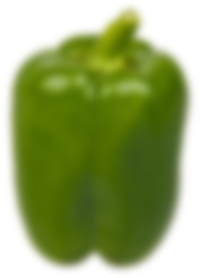






Creating the Perfect Winter Garden in Your Apartment: Key Considerations
-
Optimal Lighting for Growth: When cultivating an indoor winter garden, adequate lighting is paramount. The ideal location is a kitchen windowsill, benefiting from slightly higher humidity levels and plenty of light. If space is limited, consider installing shelves or brackets on window ledges to accommodate potted plants. Alternatively, invest in a purpose-built rack with shelves equipped with appropriate lighting. Such racks are available in stores or can be a DIY project. They offer the flexibility to place your winter garden anywhere in your home, eliminating the need to rely solely on window space.
-
Addressing Lighting Challenges: In the winter, natural daylight can be scarce, especially if your apartment faces north. To combat this issue, supplementary lighting becomes essential. Phyto lamps, with a light spectrum closely resembling natural sunlight, are an excellent solution. Alternatively, LED lamps and fluorescent lights can serve as more cost-effective alternatives. During the darker months, consider leaving your additional lighting on for 12-14 hours a day to ensure your plants receive the necessary illumination for healthy growth.
-
Maintaining an Appropriate Temperature: Maintaining the right temperature is vital for your indoor garden's success. While most vegetables thrive in indoor temperatures ranging from +17°C to +25°C, window sills can often be 5-8°C cooler. To counteract this, insulate your window frames during the colder months. Conversely, overheating can pose a risk. Shield plants from direct sunlight with paper to create artificial shade, and mist them with water multiple times daily. Additionally, wrap pots and containers with white paper or damp cloths to prevent root systems from overheating.
-
Balancing Humidity and Watering: Indoor environments typically lack the humidity levels favored by plants. To increase humidity artificially, place water containers on radiators or humidify the air by misting your plants regularly. When watering your indoor garden, ensure the water is kept in a wide bowl for up to 5 hours to reduce chlorine content and oxygenate it. Be cautious not to overwater, as this can lead to soil oversaturation or dryness. Use room-temperature water and thoroughly moisten the soil. If your soil dries out, immerse pots in water until they absorb moisture.
-
Choosing the Right Soil: Selecting the appropriate soil is crucial for your indoor winter garden. Ready-made packaged soil is a convenient choice, offering a balanced composition, freedom from pests and weed seeds, and a lack of harmful impurities. OrganicMix's soil for home gardens, enriched with vermicompost, is an excellent organic substrate. It supports robust root system development and can accommodate a wide range of crops, including tomatoes, peppers, and cabbage. However, if you prefer to create your soil mix, a blend of three parts garden soil and humus plus four parts ordinary sand, sifted through a fine garden sieve, can be effective. Ensure you disinfect the homemade mixture using methods such as freezing, baking, steaming, or etching to maintain soil hygiene.
-
Enhancing Soil Quality: To further enrich your soil, consider adding natural minerals like perlite, agroperlite, and vermiculite. These substances improve soil aeration and oxygenation while retaining moisture for longer periods. Hydrogel, a polymer, offers similar benefits by absorbing and gradually releasing water to plants. Including these additives in your soil mix enhances its quality, ensuring a nurturing environment for your indoor garden.
Cultivating a thriving winter garden in your apartment requires attention to these essential factors. By creating the right conditions and providing proper care, you can enjoy the beauty and bounty of an indoor garden throughout the year.
